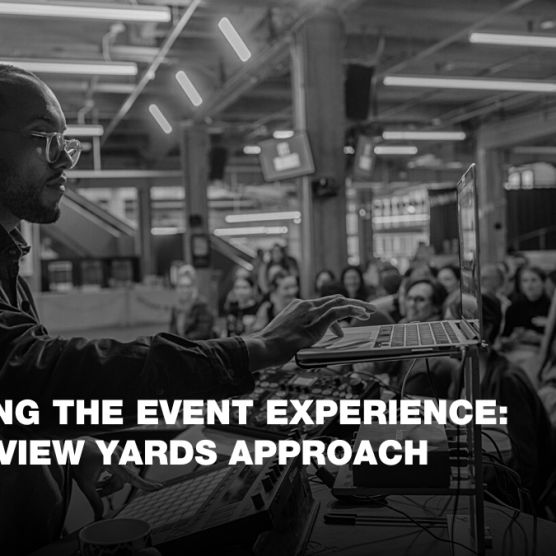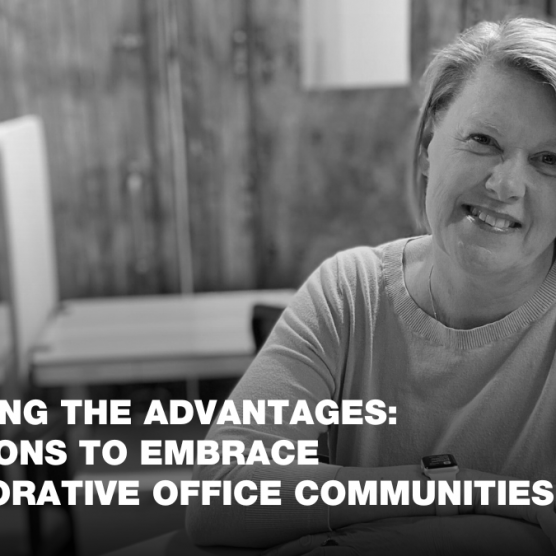Designing with Everyone in Mind: The Beginner’s Handbook to Inclusive Spaces


By: Hendrik Kohler
9-minute read
1730 words
The next time you enter a new space, try considering all aspects of your experience.
Notice the ease of entry, the weight of the doors, the images that greet you inside, the height of the tables, etc. These seemingly small details impact everyone differently based on a variety of factors, and many components come together to create an environment that is inclusive and accessible, in which everyone feels welcome.
Inclusive design is based on the thoughtful consideration of every individual’s needs and experiences. It’s about crafting environments that resonate with everyone, fostering vibrant communities where everyone feels safe, comfortable, and at home.
Inclusive design is also about more than just physical spaces; it’s about creating a welcoming space, where flexibility and adaptability meet convenience and enjoyment. It’s about honouring dignity, instilling confidence, and offering equal immersion for every person who walks through the door.
Join us as we explore the power of inclusive design to transform spaces, enrich lives, and build a more inclusive world for all.
![]() Unlock the doors to Ottawa’s Innovation Hub with our captivating virtual tour!
Unlock the doors to Ottawa’s Innovation Hub with our captivating virtual tour!
Alternatively, for those in the local area, immerse yourself in the experience firsthand by scheduling an in-person tour. Book your tour here
 Design with Inclusivity in Mind
Design with Inclusivity in Mind
At our company, inclusivity isn’t just a goal—it’s our guiding principle. We’re committed to creating experiences where everyone feels valued and included.
We’re determined to lead the charge in our industry by identifying and addressing points of segregation, whether it’s ensuring wheelchair and pushchair accessibility, or implementing highly visible doors and non-slip floors to remove barriers to guest participation.
From inclusive washrooms to a designated prayer room where individuals can worship without interruption, we’ve thoughtfully designed our spaces to accommodate diverse needs, and taken concrete steps to ensure inclusivity throughout our facility.
We’ve also incorporated furniture selection into our inclusivity efforts, focusing on soft edges, accessible height, and a lower profile to cater to guests with mobility issues. At every turn, we’re dedicated to fostering a sense of belonging for all who engage with our company.
What is Inclusive Design?
 Inclusive design is the embodiment of embracing and rejoicing in diversity. Every design choice either includes or excludes customers. It’s about making deliberate and informed decisions rooted in a deep understanding of user diversity to ensure the inclusion of as many people as possible. Users have a diverse spectrum of capabilities, needs, and aspirations, influenced by various situational, permanent, temporary, or emotional factors. These factors shape an individual’s sense of inclusion or exclusion, ultimately impacting their interaction with and perception of a space. At its core, inclusivity presents a remarkable design opportunity—a chance to enrich the user experience for a wide-ranging audience while celebrating the richness of human differences.
Inclusive design is the embodiment of embracing and rejoicing in diversity. Every design choice either includes or excludes customers. It’s about making deliberate and informed decisions rooted in a deep understanding of user diversity to ensure the inclusion of as many people as possible. Users have a diverse spectrum of capabilities, needs, and aspirations, influenced by various situational, permanent, temporary, or emotional factors. These factors shape an individual’s sense of inclusion or exclusion, ultimately impacting their interaction with and perception of a space. At its core, inclusivity presents a remarkable design opportunity—a chance to enrich the user experience for a wide-ranging audience while celebrating the richness of human differences.
Why are Inclusive & Accessible Designs important?
Incorporating inclusivity into the design from the start sets off a chain reaction that reverberates throughout the entire organization, influencing everything from the brand’s perception to the collaborative efforts of the event, activation, or experience teams.
This shift cultivates a heightened awareness among all involved, prompting deeper reflection on their actions and their potential impact, while also sensitizing them to the daily struggles faced by individuals.
The ripple effect isn’t limited to the design and fabrication teams that make it a reality; it extends to consumers and society and can even influence the broader industry.
Uncover the 7 Principles of Inclusive Design

Inclusive design guides us to make informed decisions in our work by deepening our understanding of societal diversity. As we navigate this terrain of designing inclusive spaces, there are numerous facets to consider:
1. Identifying Exclusionary Spaces
At its core, inclusive design hinges on empathy and the recognition that we all have unique abilities and limitations.
When we design spaces with a problem-solving approach and an awareness of exclusionary practices, it’s important to transcend our biases and view it as an opportunity to use our creativity in solving problems.
While the height of structures, entrances and exits, and visuals and audio, can serve as baselines for addressing exclusions, others like wording, touchpoint locations, and even transportation logistics can also have an impact on everyone’s experiences.
 💡Pro Tip: Collaborate with Expert Consultants for a Fresh Perspective
💡Pro Tip: Collaborate with Expert Consultants for a Fresh Perspective
It can be difficult to assess the unique needs of every client.
We recommend collaborating with local consultants, like Morgan Wall with Beyond Access (BA). BA provides diversity, equity and inclusion consulting and training services to businesses and individuals with specific expertise in accessibility and disability inclusion. The owner and lead consultant, Morgan, toured Bayview Yards and provided her recommendations from the lens of a queer, autistic, and disabled entrepreneur. We hope the insights gathered will help us in making Bayview Yards accessible for all.
2. Exploring Human Diversity
 Our ability to pause and reflect, seek support from others, and draw upon research, allows us to understand people from different backgrounds better.
Our ability to pause and reflect, seek support from others, and draw upon research, allows us to understand people from different backgrounds better.
As inclusive design puts people at the centre of an experience from the very start, it is so important that we lose any prejudices about everyone’s ability prior to coming up with a design.
According to the Inclusive Design Research Centre at OCAD University, “Inclusive design is design that considers the full range of human diversity with respect to ability, language, culture, gender, age, and other forms of human difference.”
Researching and taking on fresh, different perspectives is the first step into gaining more insight into the diversity of the human experience, which is different for everyone.

💡Pro Tip: Establish a Dynamic Taskforce for Targeted Insight
Consider putting together a task force that represents diverse roles within your facility, ranging from entry-level employees to senior management, This collective can help you thoroughly assess various aspects of your facility, processes, and entry experience. Keep the momentum going by getting this group together for regular meetings to refine and rejuvenate your insights continually.
3. Embracing Choice and Diversity
Creating a range of options for task completion, space entry, audio consumption, and immersive experiences is essential for truly inclusive design. Individuals have varying preferences, needs, abilities, and circumstances, so we shouldn’t presume to dictate how they engage with our designs.
By offering alternatives, such as visual text and braille, audio with captioning, ramps alongside stairs, or experiences with consistent lighting, we help empower individuals to choose options that best align with their preferences and requirements. The options available are limitless and can enrich the depth and inclusivity of our designs.
4. Cultivating Consistency in Design
While offering choice is key in inclusive design, being consistent is equally important in fostering cohesion and uniformity for the audience.
Providing users with a structured framework with familiar conventions applied consistently throughout a space can significantly enhance their confidence in the environment.
Even being consistent with minor details such as the height of touch points, colour schemes, surface textures, and audio voices can contribute to guests feeling comfortable exploring the space and enjoying the experience more fully.
5. Navigating Visual Considerations with Care

When designing immersive experiences, lighting, noise levels, technology, and ease of access are important considerations. Our goal is to choose visual formats that align with guest preferences and the ambiance of the space while also reflecting the essence of our company, the brand, and the intended experience.
Relying solely on colour can exclude colour-blind or colour-deficient users, as well as individuals from different cultural backgrounds where colours may carry significant meanings.
Additionally, text may not always be accessible to everyone, so it’s important to include audio guidance options wherever feasible. Mindfulness in our visualizations helps everyone feel welcomed and respected, and staying flexible in our design approach can help make this happen.
6. Considering Unconscious Bias in Design
 Designing for accessibility presents diverse challenges, from accommodating unique needs to addressing economic disparities.
Designing for accessibility presents diverse challenges, from accommodating unique needs to addressing economic disparities.
Technological advancements, while beneficial, can also create barriers if adaptive versions offering more accessibility aren’t available and economic limitations may prevent underprivileged communities from accessing certain experiences, like downloading apps without smartphones.
While it’s not always possible to meet every need immediately, we strive to create welcoming spaces with multiple solutions – gradually expanding accessibility and inclusivity for all.
7. Fostering Diverse Visual Representation
In the pursuit of creating an inclusive and welcoming environment, the visual elements within a space hold significant importance.
One effective strategy to achieve this is to incorporate artwork created by a diverse group of local artists. This decision showcases a variety of stories, narratives, colour palettes, symbols, and artistic styles. It also contributes to the support and empowerment of different communities, thereby fostering a rich cultural tapestry within the space.
Also, the subject matter depicted in the artwork plays a pivotal role in shaping the atmosphere and ambiance of the space.
Consideration must be given to whether the images convey positivity, provoke thought, and align with the intended brand messages that the space seeks to communicate to its audiences. Thoughtful curation of artwork helps ensure that it enhances the overall experience of the space immersing viewers in a visually stimulating and emotionally resonant journey.

In the heart of Bayview Yards, a striking red staircase is adorned with a captivating mural – digitally crafted by local artist Allan André.
With meticulous attention, André incorporates underrepresented groups into his artwork, aspiring to inspire them to envision themselves as future creators capable of shaping the world and fostering positive change within their communities and society.
Inclusive and accessible design unites to cater to human diversity, fosters equal experiences, and broadens audience appeal. By embracing diverse perspectives and narratives, inclusive design can help elevate brands to leadership positions, while responding to user needs can spark innovation and foster social responsibility.
By prioritizing inclusivity and accessibility in design, we catalyze industry transformation, challenging societal norms and limitations. While not every space can truly meet the needs of every individual, striving for the broadest coverage possible remains paramount.
While designing inclusively is an ongoing journey that offers fresh insights and innovative solutions, neglecting inclusion in design can damage your brand and have wider repercussions across sales and product development.
Our commitment is to craft experiences that promote equity, access, and opportunity, weaving inclusion into every immersive encounter. Imagine the possibilities!
![]()
Ready to elevate your workspace and empower your diverse team?
Experience inclusivity firsthand at Bayview Yards. Explore our unique office solutions designed with diversity in mind. Connect with us today to unlock a space where every member of your team can thrive. Connect with us today.





